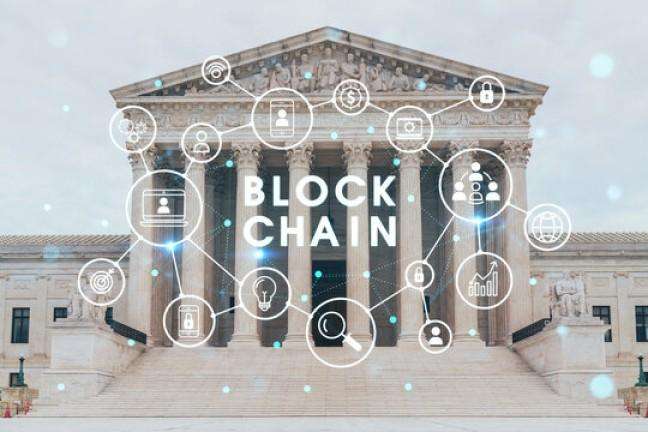The blockchain space has evolved rapidly over the past decade, giving rise to numerous platforms aiming to tackle different challenges faced by traditional technologies. One such platform is Aeternity, a blockchain project that stands out for its innovative approach to scalability, efficiency, and speed. In this article, I will provide a detailed overview of the Aeternity blockchain, its unique features, and how it compares to other blockchain technologies.
Table of Contents
What is Aeternity Blockchain?
Aeternity is a decentralized blockchain platform designed to offer scalable and efficient solutions for smart contracts, decentralized applications (dApps), and digital assets. Its development began in 2016 under the leadership of Yanislav Malahov, often referred to as the “Godfather of Ethereum.” Aeternity was built with a specific focus on addressing the limitations that many existing blockchains face, particularly scalability and transaction speed.
Key Features of Aeternity Blockchain
1. State Channels
One of Aeternity’s standout features is its implementation of state channels. A state channel allows users to transact off-chain while maintaining the security guarantees of the underlying blockchain. These off-chain transactions can be conducted instantly and at a much lower cost. Once the state channel is closed, the final state of the channel is written back onto the blockchain.
For example, in a traditional blockchain transaction, if two parties wish to exchange a set of assets, they must wait for the transaction to be confirmed by the network. This confirmation can take several minutes or even hours, depending on network congestion. With state channels, the parties can transact immediately without waiting for confirmation, only needing the blockchain’s final validation.
2. Oracles
Aeternity uses oracles to bridge the gap between the real world and the blockchain. Oracles are entities that provide external data to smart contracts. This is particularly important for use cases like betting or financial contracts, where information from the outside world is crucial. By integrating oracles, Aeternity enables smart contracts to respond to real-world events, making them more versatile and applicable to a broader range of applications.
3. Naming System
Aeternity introduces a unique approach to domain naming through its “æternity Name System” (ANS). This system allows for human-readable addresses, making it easier for users to interact with the blockchain. Instead of using long, complex addresses, users can use simple names (such as “myname.aeternity”) to send transactions or access decentralized applications (dApps).
4. Smart Contracts and Virtual Machines
Aeternity features an advanced, yet flexible smart contract system. Unlike Ethereum, which uses the Ethereum Virtual Machine (EVM), Aeternity runs on a custom-built virtual machine known as the Aeternity Virtual Machine (AEVM). The AEVM is designed to handle smart contracts more efficiently by optimizing for performance. Aeternity’s smart contracts are written in Sophia, a domain-specific language that offers a high level of safety and simplicity.
5. Consensus Mechanism
Aeternity uses a hybrid consensus mechanism that combines Proof of Work (PoW) with Byzantine Fault Tolerance (BFT). This approach ensures that the blockchain remains secure and decentralized while also being highly scalable. PoW is used to secure the network and validate transactions, while BFT ensures that even in the event of faulty nodes, the network can still reach consensus efficiently.
6. Decentralized File Storage
Another critical aspect of Aeternity is its decentralized file storage. The blockchain’s native file storage system, known as “Aeternity File System” (AFS), allows users to store large files directly on the blockchain. This is particularly useful for applications like decentralized content distribution or supply chain management, where large amounts of data need to be stored in a secure and immutable manner.
Comparing Aeternity with Other Blockchain Platforms
Now, let’s compare Aeternity with some of the most well-known blockchain platforms. This comparison will highlight how Aeternity differentiates itself in terms of scalability, transaction speed, and functionality.
| Feature | Aeternity | Ethereum | Bitcoin | EOS |
|---|---|---|---|---|
| Scalability | High (via state channels) | Moderate (layer-2 solutions) | Low (limited scalability) | High (delegated proof-of-stake) |
| Transaction Speed | Very Fast (off-chain) | Moderate (on-chain) | Slow (10-minute block time) | Fast (3 seconds block time) |
| Smart Contracts | Yes (Sophia language) | Yes (Solidity language) | No | Yes (EOSIO) |
| Consensus Mechanism | PoW + BFT | PoW | PoW | DPoS (Delegated Proof of Stake) |
| Oracles Integration | Yes | Yes | No | Yes |
| File Storage | Yes (Aeternity File System) | No | No | Yes (Interplanetary File System) |
| Main Focus | Scalable dApps and smart contracts | General-purpose blockchain | Store of value | Scalable dApps and enterprise solutions |
As seen in the table above, Aeternity’s combination of state channels, efficient smart contract processing, and decentralized file storage gives it a clear edge in certain areas compared to other blockchains like Ethereum and Bitcoin.
Aeternity’s Ecosystem and Adoption
The Aeternity blockchain is not just a technical solution; it also offers a broad ecosystem of tools, applications, and partnerships that aim to bring its technology to the forefront of blockchain adoption.
Aeternity’s ecosystem includes a variety of dApps, ranging from finance to gaming, and its blockchain is particularly suited for applications that require fast and low-cost transactions. For example, the blockchain is already being used for decentralized finance (DeFi) applications, prediction markets, and even supply chain management solutions. The ability to use state channels for real-time transactions has made Aeternity a suitable choice for applications where speed and efficiency are paramount.
Moreover, Aeternity’s enterprise adoption has been growing, with companies in various sectors looking to leverage the platform’s capabilities. Its scalability and fast transaction speeds make it ideal for large-scale, enterprise-level solutions, which is a major selling point over competitors like Ethereum, which still faces challenges in handling a large number of transactions per second.
How Does Aeternity Solve Scalability Issues?
Scalability is one of the primary concerns in the blockchain space. Traditional blockchains like Bitcoin and Ethereum struggle with scalability due to their consensus mechanisms and on-chain processing of transactions. Aeternity addresses these issues through its innovative use of state channels and a hybrid consensus mechanism.
State channels allow for instant, off-chain transactions, significantly reducing the load on the network. This means that users can interact with dApps and make transactions without having to wait for blockchain confirmations. Once the state channel is closed, the final outcome is recorded on the blockchain, ensuring that the transaction history is immutable and verifiable.
Additionally, Aeternity’s use of the BFT consensus mechanism ensures that the network can achieve high throughput without compromising security. By combining PoW for security and BFT for scalability, Aeternity can handle a large number of transactions per second while maintaining a decentralized and secure network.
Aeternity’s Token – AE
The Aeternity blockchain operates using its native cryptocurrency, AE, which is used for transaction fees, staking, and governance. AE tokens can be used to interact with the blockchain, pay for transaction costs, and even participate in the platform’s decentralized governance structure.
Staking AE tokens can help secure the network and earn rewards, much like traditional proof-of-stake systems. Additionally, AE holders can participate in governance by voting on important decisions related to the future of the network. This ensures that the community has a voice in the development and evolution of Aeternity.
Real-World Use Cases for Aeternity
Aeternity is designed with real-world applications in mind. Some of the most notable use cases for Aeternity include:
- Decentralized Finance (DeFi): Aeternity’s scalability and speed make it an excellent choice for DeFi applications. By using state channels, Aeternity allows for near-instant settlements and low-cost transactions, which are essential for DeFi applications.
- Gaming: Aeternity has partnered with several gaming platforms to enable in-game assets and transactions. The ability to handle a large number of transactions quickly and efficiently makes Aeternity well-suited for gaming applications where players need to transact in real time.
- Supply Chain Management: Aeternity’s decentralized file storage system and smart contract capabilities are useful for tracking products and goods throughout the supply chain. By leveraging blockchain technology, companies can increase transparency and reduce fraud.
- Internet of Things (IoT): Aeternity’s blockchain can be used to securely manage data from IoT devices. With its high scalability and speed, it is well-suited for IoT applications that require real-time data transmission and processing.
Conclusion
Aeternity blockchain represents a significant leap forward in solving the challenges that traditional blockchains face. Its combination of state channels, scalability, efficient smart contracts, and decentralized file storage offers a unique solution for a wide range of applications. As the blockchain space continues to evolve, Aeternity is well-positioned to play a key role in the development of decentralized applications and enterprise solutions. By focusing on speed, scalability, and real-world use cases, Aeternity is carving out its niche as a blockchain platform that is both efficient and practical.





